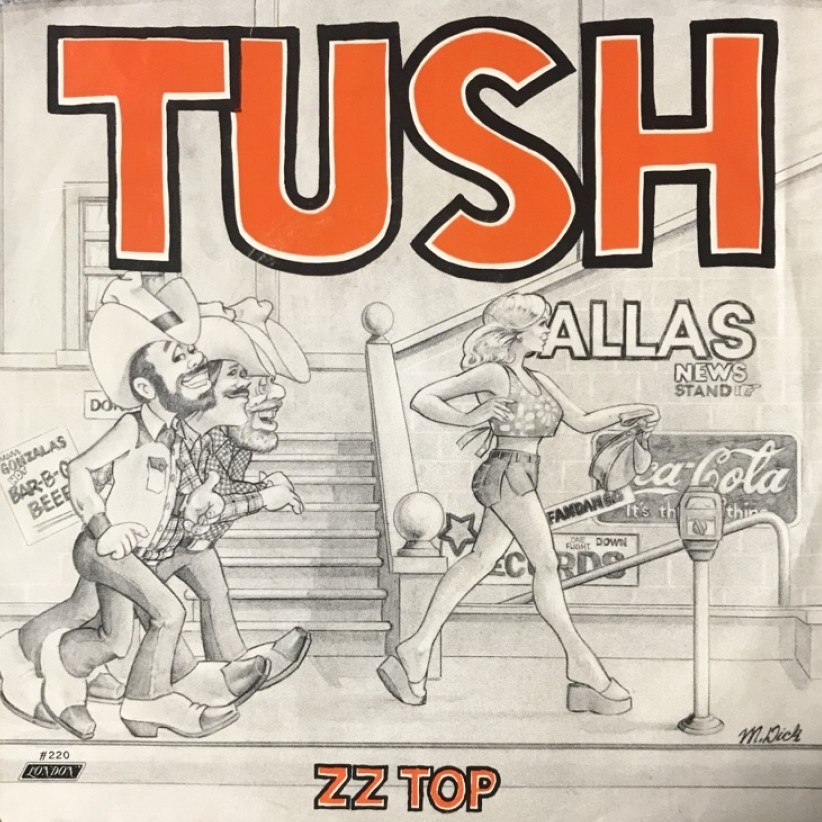How to Write a Hard Rock Classic in Five Minutes: Billy Gibbons Tells the Incredible Story of ZZ Top’s “Tush”
This 12-bar blues banger was recorded using the Pearly Gates Les Paul and a Marshall Super Lead… But what’s a Cooper Time Cube?!

Penning a hit record needn’t be an arduous task; indeed, some of the greatest songs ever written were put together in mere minutes. Anthem’s such as “Yesterday” by the Beatles, “My Sharona” by the Knack, and Black Sabbath’s “Paranoid” are all famously cited as examples.
Add to the list “Tush” from ZZ Top’s 1975 album Fandango!
Here, Billy Gibbons explains how he and Dusty Hill bounced off each other when writing the song’s lyrics. Poignantly, this ZZ Top set closer would be the last song Hill sung with the band prior to his passing earlier this year.
Fandango! was a half live/half studio album. It also spawned one of your biggest and most enduring songs, “Tush.”
That’s a funny story. The whole song unfolded in five minutes. We held an afternoon rehearsal down in Florence, Alabama, and we were playing in a dirt-floor rodeo arena without air conditioning. It was so fiercely hot.
I made up this introductory riff, and I recall the lighting director: He pulled the headphones off and he put his finger in the air, and he was grinning and pointing, and he said, “Don’t lose it.” I looked over at Dusty and I said, “Man, we’ve got about four, five minutes before we collapse from this heat.”

And so we ran through a 12-bar blues using that headline figure. Then Dusty leaned over, and he said, “What are we going to call this thing?” And I remember, the three of us were all big fans of Roy Head. In fact, we used to play “Treat Her Right” as part of the ZZ Top repertoire. And the flip side of Roy Head’s “Treat Her Right” single was an instrumental called “Tush Hog,” which was a Texas slang term that meant “That’s just about as good as it’s gonna get.” It didn’t get better than a tush hog! [laughs]
All the latest guitar news, interviews, lessons, reviews, deals and more, direct to your inbox!
So “Tush” came together pretty quickly.
Yeah. And it goes to show you that sometimes the most effective thing can be the most simplistic thing, which is not always the easiest to do. I gave Dusty the title, and he said, “Okay... ‘I’ve been up!’” And I said, “Yeah... ‘I’ve been down!’” He said, “‘Take my word, my way around.’”
We got it down and got the heck out of that heat box! Then, later on, we polished it up and took it to the studio.

“Tush” is a song that features the classic electric guitar and amp combination of Pearly Gates played through a Marshall Super Lead. But you also used something called a Cooper Time Cube in your setup.
Yes, we did. It was a rather primitive contraption, but quite effective. Basically it was a small speaker and a microphone at either end of a stretch of 25 feet of garden hose. And the way it was set up, the hose was in a simple coil, but the law of physics prevailed.
The time it took for the sound to travel through this coil of hose gave it a very distinctive… I want to call it a kind of fractional delay. It wasn’t enough to call it slapback. You couldn’t detect any kind of a slap, but there was a delay. So we didn’t really know what it was, but I was curious when I saw the name Cooper Time Cube. I said, “Well, I dunno what it does, but we’re going to use it!”
Browse ZZ Top music here.
Rod Brakes is a music journalist with an expertise in guitars. Having spent many years at the coalface as a guitar dealer and tech, Rod's more recent work as a writer covering artists, industry pros and gear includes contributions for leading publications and websites such as Guitarist, Total Guitar, Guitar World, Guitar Player and MusicRadar in addition to specialist music books, blogs and social media. He is also a lifelong musician.

